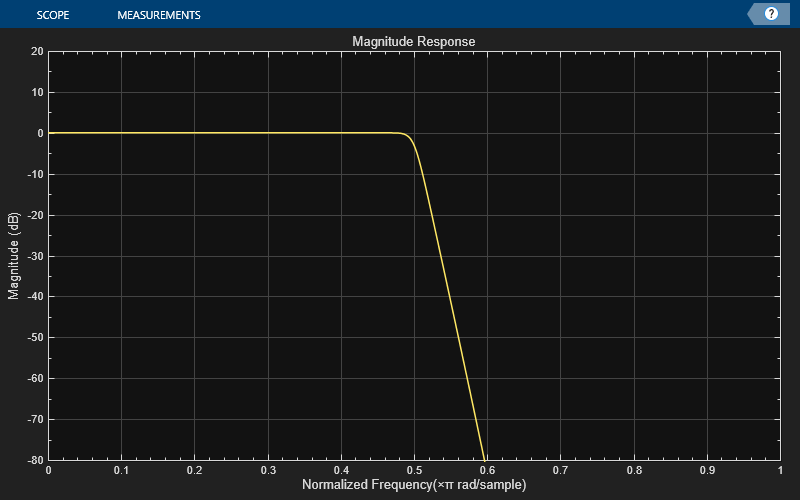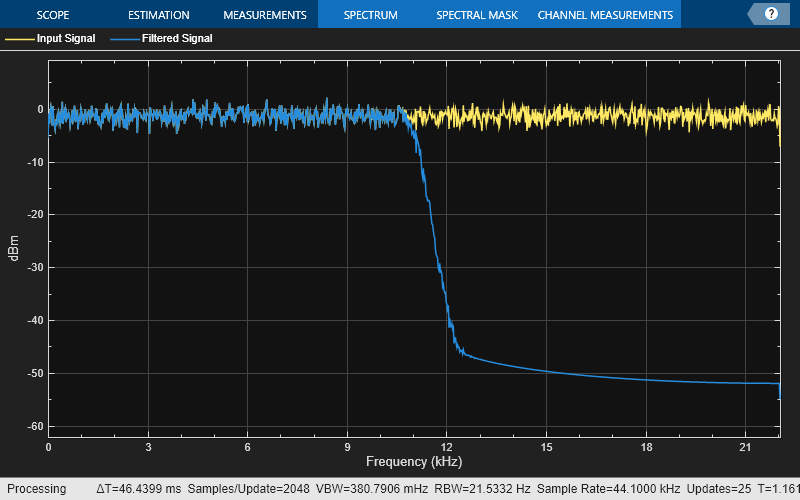designLowpassIIR
Syntax
Description
[
designs a lowpass IIR filter with the filter order of 10 and half-power frequency of
0.25. When you use this syntax, the function designs the IIR filter using the
B,A] = designLowpassIIR"default" window design method and does not compute the scale
values.
B and A are the second-order section
matrices of the size P-by-3, where P is the number
of filter sections.
The System object™ argument is false by default. To implement the filter,
assign the filter coefficients to a dsp.SOSFilter
object.
[
specifies options using one or more name-value arguments.B,A] = designLowpassIIR(Name=Value)
For example, [
designs a lowpass IIR filter with the filter order of 30 and half-power frequency of 0.4
by using the Chebyshev Type I window design method.B,A] =
designLowpassIIR(FilterOrder=30,HalfPowerFrequency=0.4,DesignMethod="cheby1")
When you specify only a partial list of filter parameters, the function designs the filter by setting the other design parameters to their default values.
When you specify any of the numeric input arguments in single precision, the function
designs the filter coefficients in single precision. Alternatively, you can use the Datatype and
like arguments to control the coefficients data
type. (since R2024b)
The function supports three design methods. Each design method supports a specific
set of design combinations. For more information, see DesignMethod.
[
also returns scale values when you specify the B,A,SV] = designLowpassIIR(Name=Value)HasScaleValues
argument. SV is a vector of 1s when you set the argument to
false and a vector of scale values when you set it to
true.
filtObj = designLowpassIIR(Name=Value)dsp.SOSFilter
System object.
This syntax applies when you set the SystemObject argument to
true.



